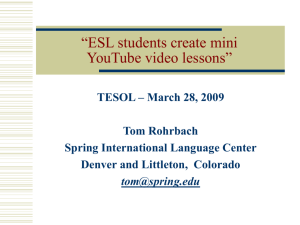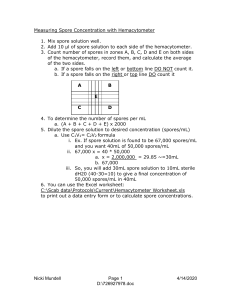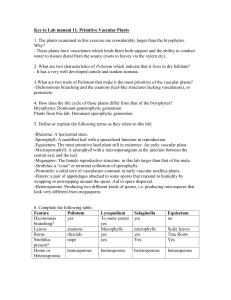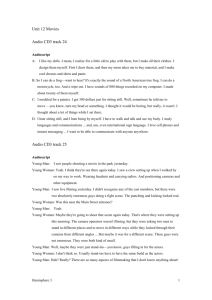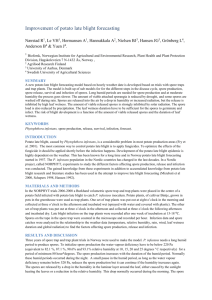Weblinks: Plants DO move
advertisement
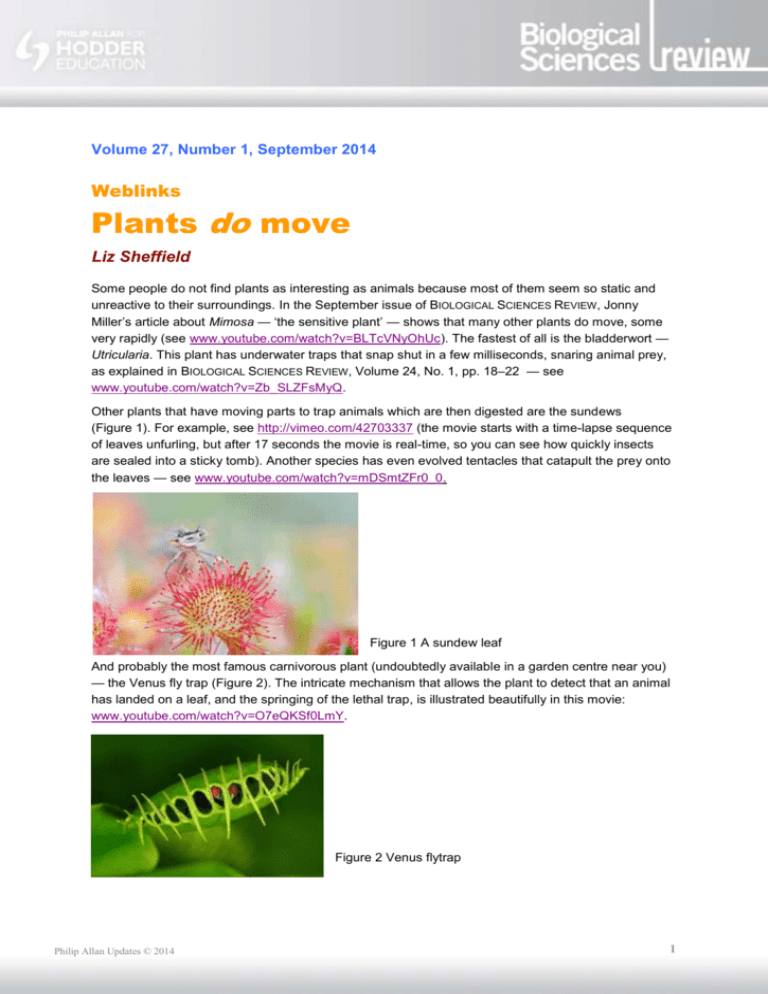
Volume 27, Number 1, September 2014 Weblinks Plants do move Liz Sheffield Some people do not find plants as interesting as animals because most of them seem so static and unreactive to their surroundings. In the September issue of BIOLOGICAL SCIENCES REVIEW, Jonny Miller’s article about Mimosa — ‘the sensitive plant’ — shows that many other plants do move, some very rapidly (see www.youtube.com/watch?v=BLTcVNyOhUc). The fastest of all is the bladderwort — Utricularia. This plant has underwater traps that snap shut in a few milliseconds, snaring animal prey, as explained in BIOLOGICAL SCIENCES REVIEW, Volume 24, No. 1, pp. 18–22 — see www.youtube.com/watch?v=Zb_SLZFsMyQ. Other plants that have moving parts to trap animals which are then digested are the sundews (Figure 1). For example, see http://vimeo.com/42703337 (the movie starts with a time-lapse sequence of leaves unfurling, but after 17 seconds the movie is real-time, so you can see how quickly insects are sealed into a sticky tomb). Another species has even evolved tentacles that catapult the prey onto the leaves — see www.youtube.com/watch?v=mDSmtZFr0_0. Figure 1 A sundew leaf And probably the most famous carnivorous plant (undoubtedly available in a garden centre near you) — the Venus fly trap (Figure 2). The intricate mechanism that allows the plant to detect that an animal has landed on a leaf, and the springing of the lethal trap, is illustrated beautifully in this movie: www.youtube.com/watch?v=O7eQKSf0LmY. Figure 2 Venus flytrap Philip Allan Updates © 2014 1 All plants move as they grow, but the movement of some is not simply a search for sunlight, but for victims to rob. Dodder is a plant parasite related to the bindweed. See the following movie to watch a time-lapse sequence that explains how its movements help it locate the juiciest victims: www.bbc.co.uk/programmes/p009c58h. In some plants it is the seeds that move. An example is the Himalayan balsam (an invasive plant that you can learn more about in the November issue of BIOLOGICAL SCIENCES REVIEW). The hair-trigger release of the seed pods of this plant (Figure 3) violently launches the seeds several metres, as explained in this movie: www.youtube.com/watch?v=wOIHzl2h9a8, which also shows the incredible squirting cucumber. These dispersal mechanisms are not active movements, but rely solely on physical processes, as happens in spore dispersal in the group of plants on which my research is based — the ferns. Figure 3 Himalayan balsam seed pods Spores are like tiny equivalents of seeds — they contain all the information to make a new fern plant. But as you might guess, their best chance of success is to start life some distance away from where their parent is growing. Spores are made in stalked capsules which are torn open by the force of evaporation in dry weather, starting an amazing catapult mechanism that flings the spores into the air — see the following for real-time footage and explanation of the physics behind the process: www.youtube.com/watch?v=mDlHGrRlNPE. Figure 4 Fern capsule releasing spores The process of spore release in the bogmoss Sphagnum is so violent that if you are standing nearby when a capsule explodes, you will be able to hear it — not bad for a ‘pop gun’ that is less than 3 millimetres long! See http://vimeo.com/13582494. This resource is part of BIOLOGICAL SCIENCES REVIEW , a magazine written for A-level students by subject experts. To subscribe to the full magazine go to www.hoddereducation.co.uk/biologicalsciencesreview Philip Allan Updates © 2014 2







